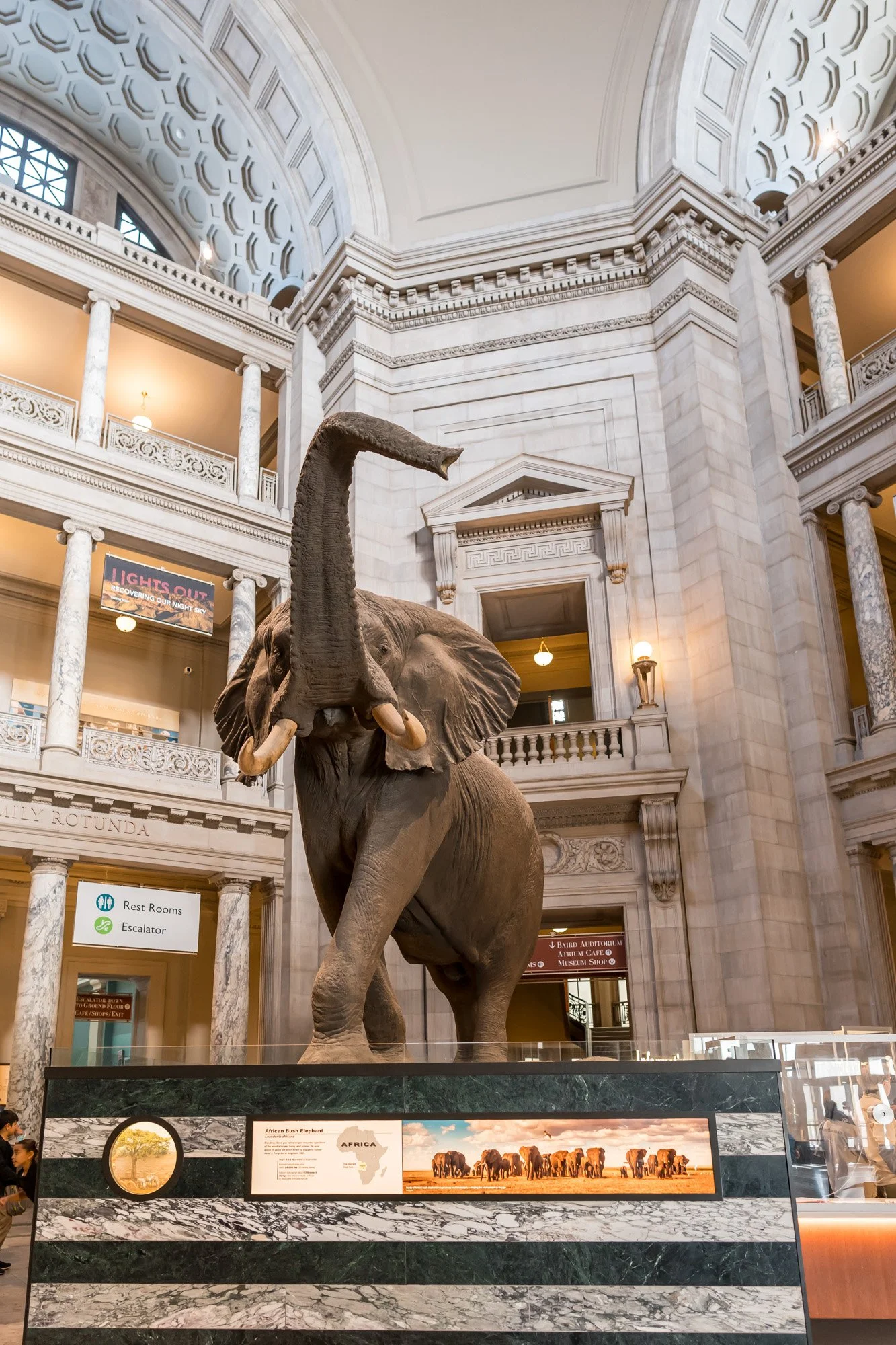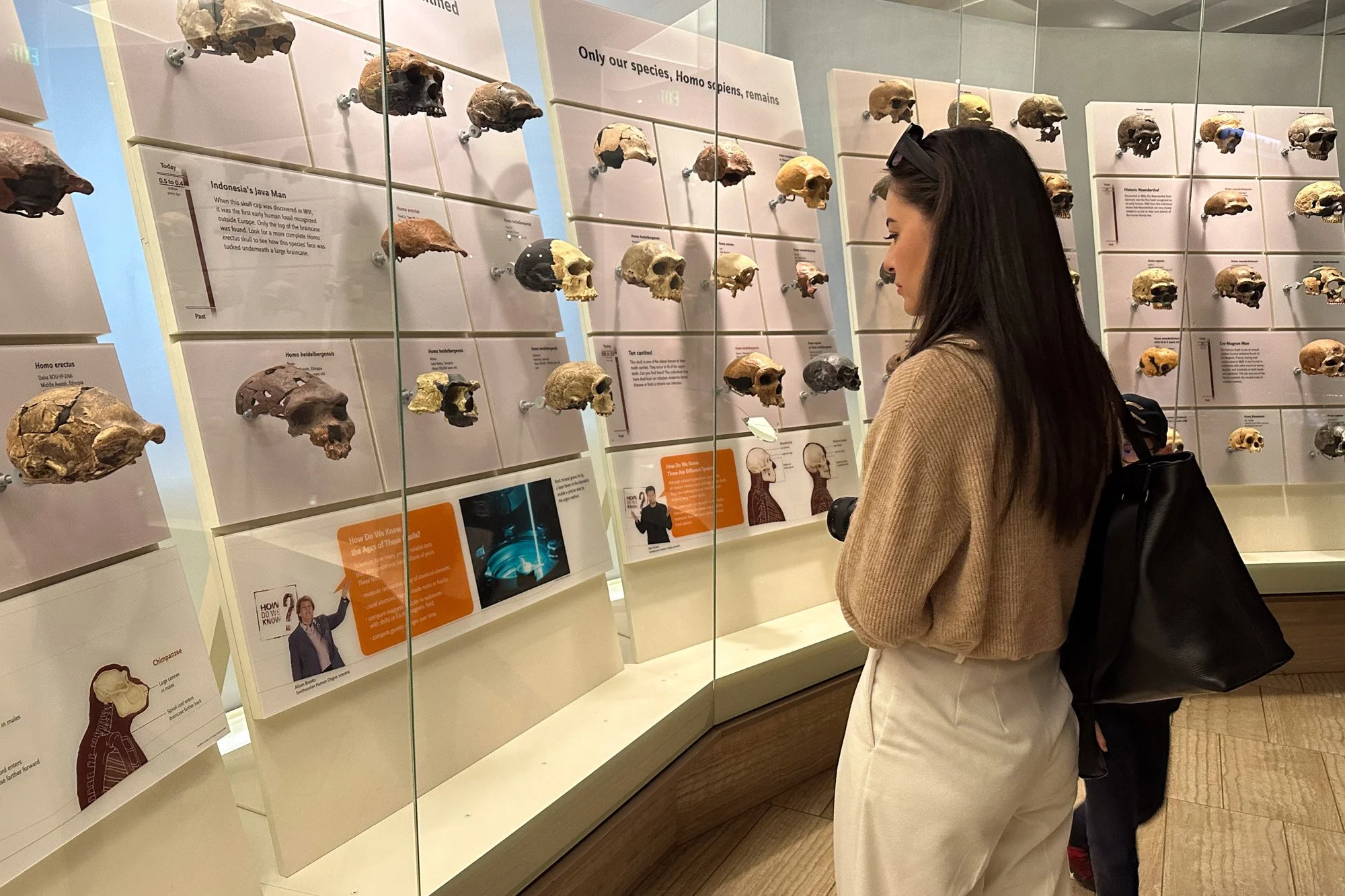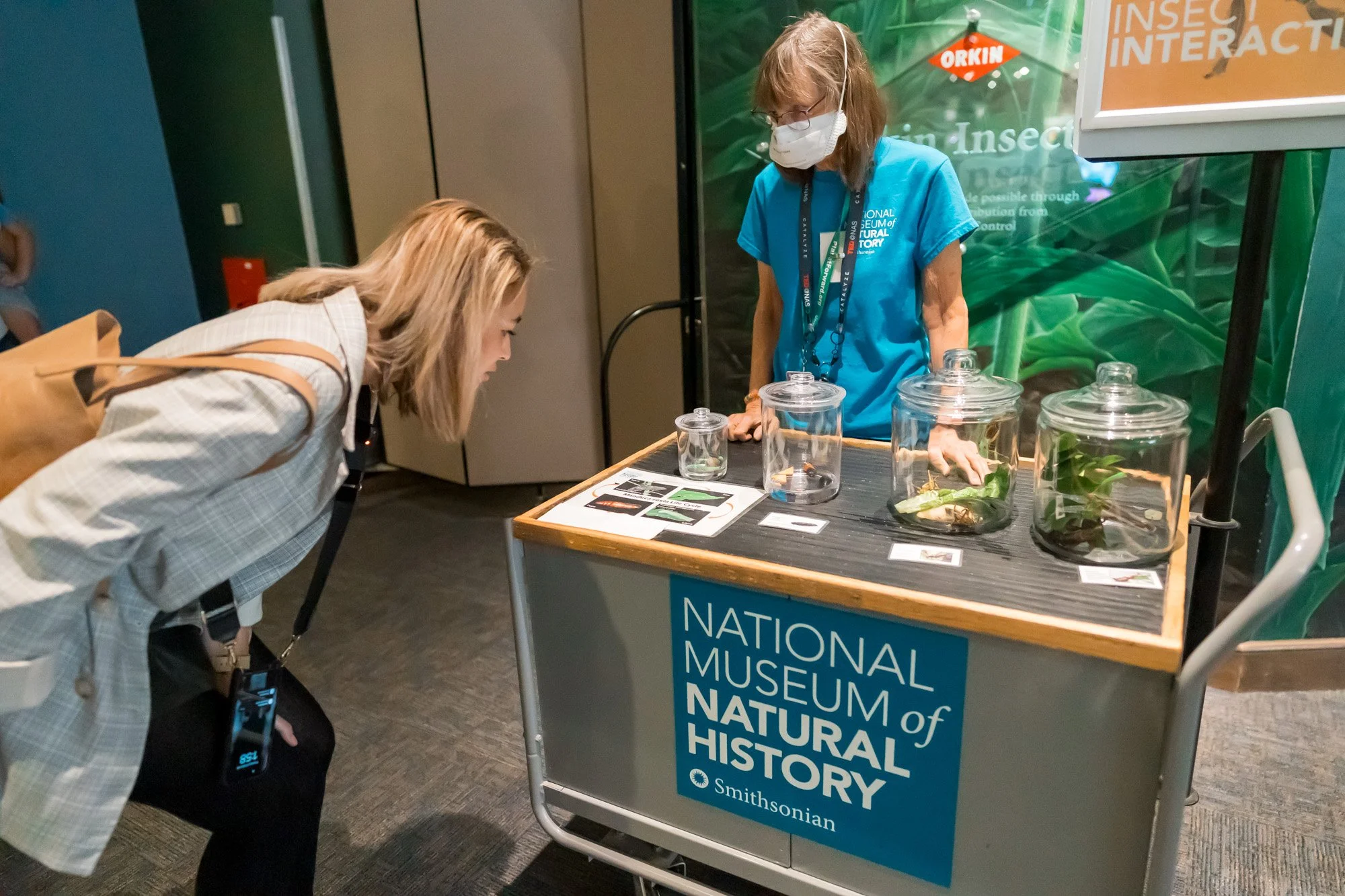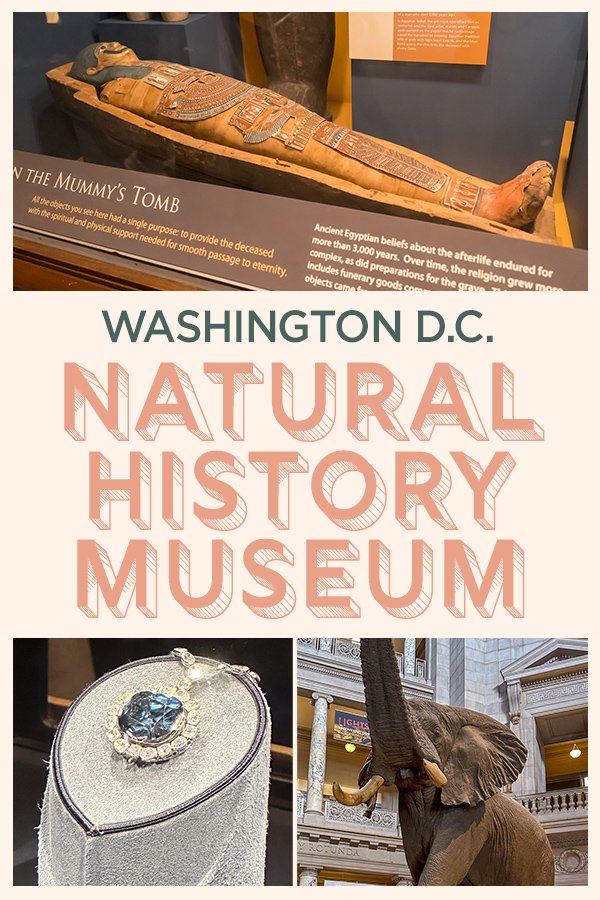7 Things You Must See at the Smithsonian National Museum of Natural History in DC
/This post contains affiliate links, which means that at no additional cost to you if you click on one of the product links, we may earn a commission. As Amazon Associates, we earn from qualifying purchases.
We have both been to a fair share of Natural History museums throughout the United States, but this was our first time visiting the one in Washington D.C. We have always heard many great things about D.C.’s Natural History museum, so we were looking forward to what it had in store for us to see.
Here are the top must-see highlights we discovered at the Smithsonian National Museum of Natural History that you can’t miss.
1. Henry, The African Bush Elephant
Right when you walk into the museum, you can’t miss the giant elephant statue in the middle of the lobby. Its presence is immediately captivating and commands attention from visitors of all ages. Towering at an impressive 13 feet tall, this iconic sculpture has become synonymous with the Smithsonian Natural History Museum.
It has been on display at the museum since 1959 and is sometimes called the Fénykövi elephant, after the Hungarian game hunter who donated the hide, but it’s more often called by its nickname: Henry.
Henry the African bush Elephant
view from the second floor
2. Family Hall of Mammals
We actually enjoyed this exhibit more than we thought we would as we discovered an abundance of interesting animals and fascinating tidbits about them. From the rare Binturong to the adorable Sugar glider, we had a great time exploring the diverse array of creatures.
The Hall captivated us with its extensive collection of 274 mammals from all corners of the world, showcasing their unique adaptations to different environments.
Huuuge Ears
Funny pose
3. Hall of Human Origins
There’s an entire section on the evolution of humans that spans across millions of years, and one particular exhibit that instantly caught our attention was the collection of various skulls. It was truly captivating to see the stark differences in the skulls from different countries, each with its own unique features and characteristics. What made it even more intriguing was the fact that each skull was given a nickname, such as the endearing "Twiggy".
The rest of the 15,000-square-foot gallery is an interactive exploration of human evolution. You can discover fascinating stories of extinction and survival, compare five touchable early human skulls, and experience a "morphing" station to find out what you'd look like as an early human.
Collection of Skulls
4. Giant Squid
We didn’t even know giant squids even existed until we saw this being displayed at the museum. This female giant squid was caught in 2005 and estimated to be 2-3 years old. When alive, this incredible creature measured a staggering 11 meters in length, with its tentacles extending an astonishing 6.7 meters. The largest giant squid ever recorded by scientists was almost 43 feet (13 meters) long, and may have weighed nearly a ton.
Encountering a giant squid is an exceedingly rare event, especially seeing one alive, due to their deep-sea habitat. The majority of scientific knowledge regarding these enigmatic creatures has been from dead carcasses that floated to the surface and were found by fishermen.
Giant Squid Banner
5. FossiLab
Fossil exhibits are always fascinating as they provide a glimpse into the ancient world of dinosaurs. It's truly captivating to witness the various types of intricate dinosaur statues created based on the discovered fossils. However, amidst the awe-inspiring exhibits, our attention was immediately captured by a particular section of the museum - the fossil lab.
This unique space, known as FossiLab, is not just a display area, but rather a functioning laboratory where dedicated Museum staff and passionate volunteers engage in a multitude of activities related to fossil preparation and conservation. Intriguingly, each workstation in the lab was adorned with informative signs, enlightening visitors about the particular types of fossils currently being unearthed.
FossiLab
6. Hope Diamond
This is probably the most popular item to see here at this museum. The Hope Diamond, which is housed within a glass case, was a gift from the American jeweler, Harry Winston. Its magnificence truly captivates visitors as they marvel at its mesmerizing shades of blue. This remarkable gemstone is hailed as the largest of all blue diamonds, boasting an astonishing 45.52 carats.
Initially, we didn't know much about its significance, but after immersing ourselves in its eventful history, we began to grasp why the Hope Diamond has become such an extraordinary and iconic symbol, capturing the hearts of all who lay eyes upon it.
Largest BLue Diamond in the world
The Hope Diamond
The diamond was originally found in India in the 1600s and was sold to King Louis XIV of France in 1668. In 1792, the gem was lost in the French Revolution, but turned up in London in 1812. It was sold to England’s King George IV and in the 1830s, Henry Philip Hope, a London banker, bought the diamond.
From then on, the diamond was called the Hope Diamond. It remained in the Hope family until 1901 and then passed back and forth between diamond merchants and collectors in London, New York, and Paris.
In 1949, Harry Winston bought the Hope Diamond and it became the central attraction of his Court of Jewels collection, which toured the world to raise money for charity.
7. Egyptian Mummies
We are always captivated and filled with intrigue when it comes to Egyptian mummies, so it comes as no surprise that the section dedicated to them was the most fascinating and spellbinding for us. Exploring this area allowed us to delve deeper into the intricate history and profound beliefs surrounding these ancient relics.
Mummy Tomb
The ancient Egyptians firmly believed that death marked the commencement of an eternal journey, transcending beyond earthly bounds. Their meticulous and elaborate process of embalming, preserving, and entombing the deceased spanned over an astounding 3,000 years.
These meticulous preparations were undertaken to ensure that the departed individuals had everything they needed for their sojourn into the next world. The tombs themselves were also filled with offerings, intended to appease the gods and facilitate a smooth and peaceful transition for the souls of the departed.
Don’t Miss This!
Insect Cart
We’re not sure if this section is always available, but we stumbled upon it while we were in the Egyptian Mummies section. It was an unexpected and delightful surprise to come across this special display showcasing four different types of insects. Visitors were not only allowed to view the insects up close but also had the opportunity to hold three of them.
Although we personally did not take part in this hands-on experience, observing the children grasp the opportunity with excitement brought a smile to our faces to witness their enthusiasm. Out of the four critters on display, it was the Tobacco Hornworm Caterpillar and the Eastern Lubber Grasshopper that captivated the children's attention the most.
Crystal Checking out the Insect Cart
SMITHSONIAN NATIONAL MUSEUM OF NATURAL HISTORY
10th St. & Constitution Ave. NW, Washington, DC 20560
FREE Admission!








































